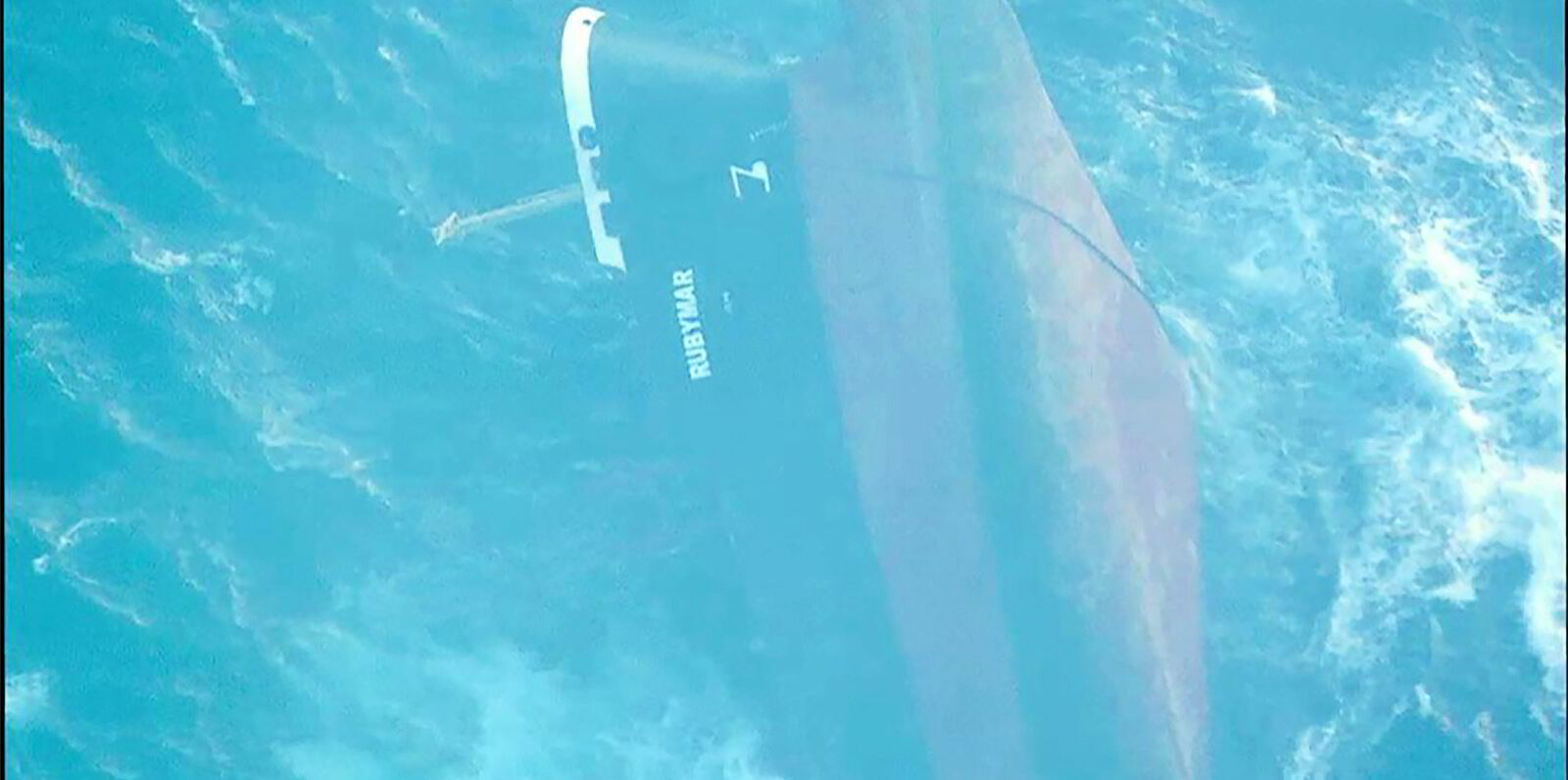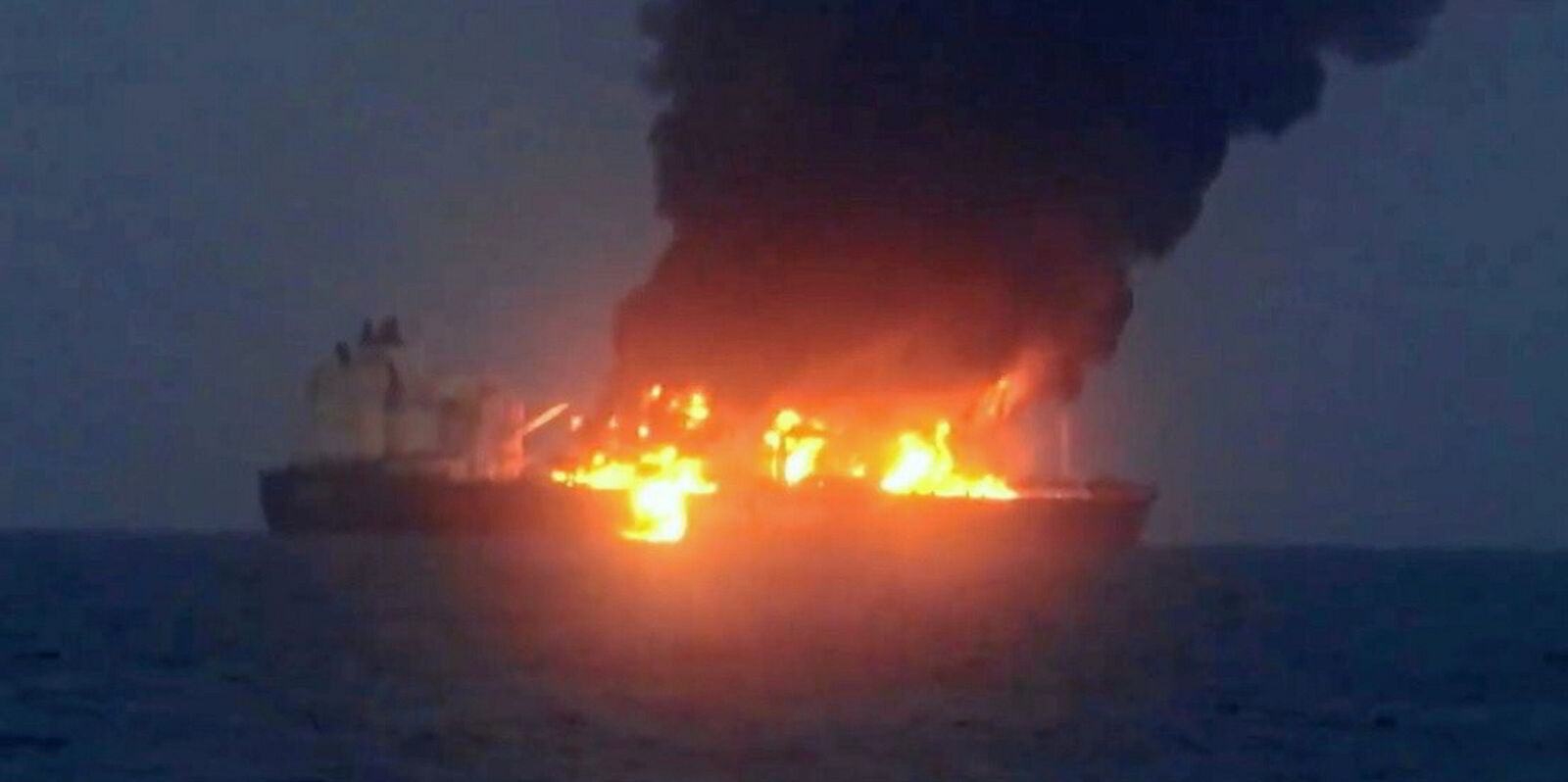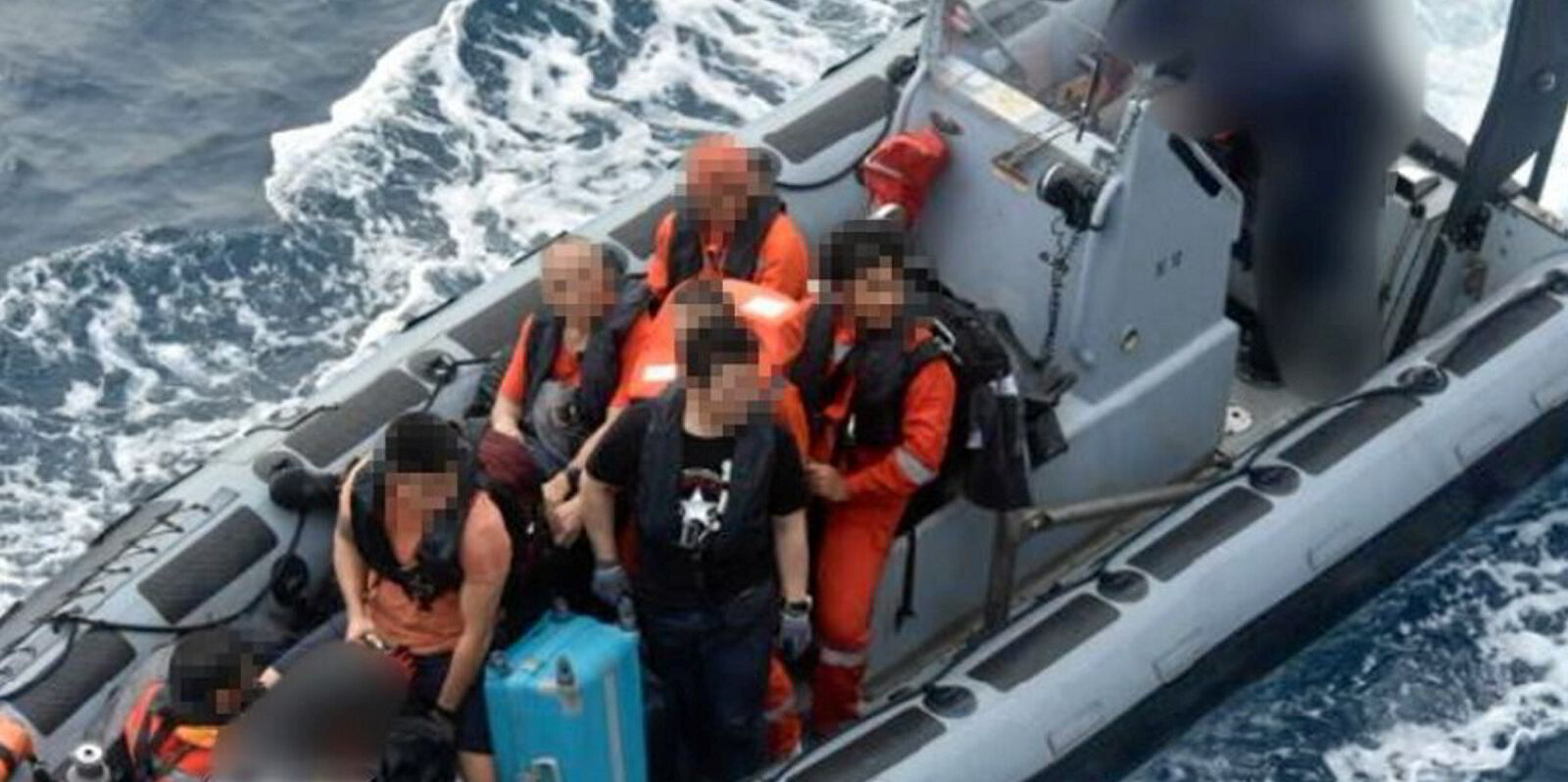Video showing a devastating blast on the Delta Tankers-operated Sounion raised the threat of a major environmental disaster in the Red Sea, with reports of fires burning on the abandoned tanker.
The 163,759-dwt suezmax (built 2006) was said to be drifting with three separate fires on the deck on Friday after being hit and left without power following a sustained attack by Houthi rebels, according to UK maritime authorities.
The Yemen-based group released video of Wednesday’s attack that showed fire down the length of the deck of the Sounian, which was loaded with 922,000 barrels of Iraqi crude.
The nature of the explosion suggested that the tanker had been boarded, explosives planted and then triggered remotely from a distance, according to maritime security sources.
The potential nature of the blast adds to questions for Delta Tankers after the European Union military operation Aspides said that the ship had not asked for protection during its Red Sea transit despite the company’s operated vessels being targeted twice previously in August.
A spokesman for the company said that the fire stopped shortly after detonation, but UK maritime officials reported on Friday that three fires were still burning on the ship.
However, the ship remained afloat with fires being contained and naval ships close by assisting with the operations, according to sources.
Environmental hazard
The EU naval mission said that the ship represents a “navigational and environmental hazard”.
“It is essential that everyone in the area exercises caution and refrains from any actions that could lead to a deterioration of the current situation,” it said on Thursday.
If all of the Sounion’s oil cargo spilt into the Red Sea, it would be among the world’s worst spills. The biggest, the Atlantic Empress disaster off the coast of Tobago in 1979, was about twice the size.
UK maritime authorities said three fires had been observed on the ship in its latest update on Saturday, with the vessel appearing to be drifting.
A statement by the Houthis said that the Sounion, and the 56,000-dwt SW North Wind I (built 2009) which was also targeted on Wednesday, were attacked using missiles, drones and sea drones.
It claimed that the Sounion had “ties with the Israeli enemy and violated the ban decision of entry to the ports of occupied Palestine”.
The ship was “accurately and directly hit” and was now at risk of sinking, according to the statement.
Delta Tankers was “doing everything it can to move the vessel (and cargo)”, it said in a statement on Saturday. “For security reasons, we are not in a position to comment further.”
The SW North Wind I, managed by Monaco-based Sea World Management SAM, was targeted by at least five devices but was not damaged and was able to continue its voyage.
The 29-strong Russian and Filipino crew of the Sounion was rescued by a French naval vessel on Thursday and taken to the nearest safe port, Djibouti, according to the EU Aspides force.
The French vessel also destroyed a sea drone that posed an imminent threat to the Sounion.
The attack was the third on a ship connected to Delta Tankers in August. Attacks earlier this month targeted the 162,000-dwt Delta Atlantica (built 2011) and the 158,000-dwt suezmax Delta Blue (built 2012). Both ships were able to continue.
Delta Tankers said earlier this week that plans were in place to move the Sounion to a safer destination where a full assessment could be undertaken.
The vulnerability of the stricken Sounion highlights the potential nightmare scenario of a ship attack in the Red Sea.
The case of the 32,000-dwt Rubymar (built 1997) highlighted the rare unwillingness of salvors to get involved because of the risks.

The ship sank on 2 March after a couple of weeks of drifting off Yemen after being hit by two Houthi missiles.
The International Maritime Organization launched an appeal in July for a remotely operated vehicle and other kit to prepare for a spill from the Rubymar, which had 22,000 tonnes of fertiliser, 200 tonnes of heavy fuel oil and 80 tonnes of marine diesel on board.




